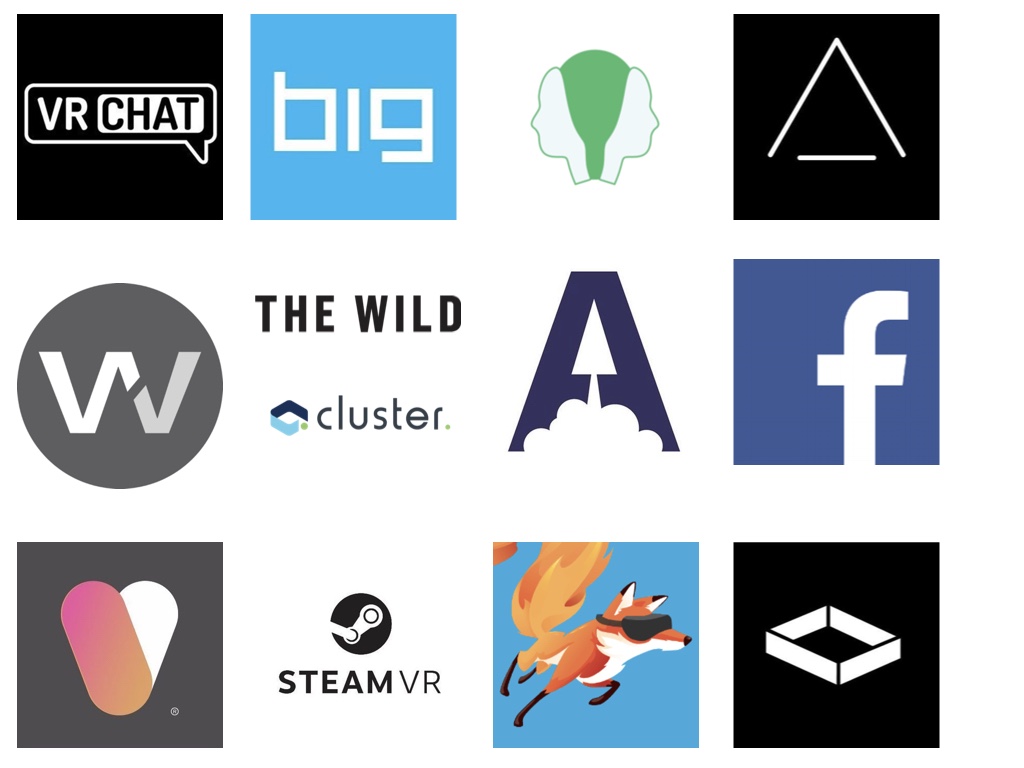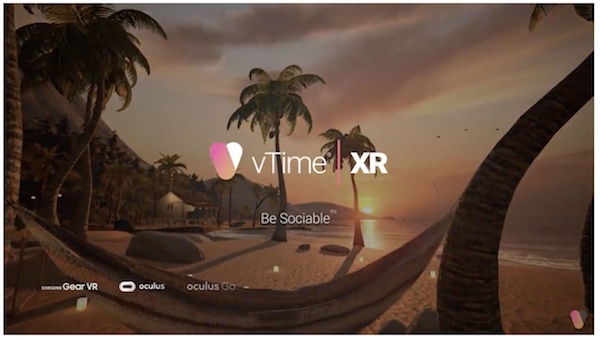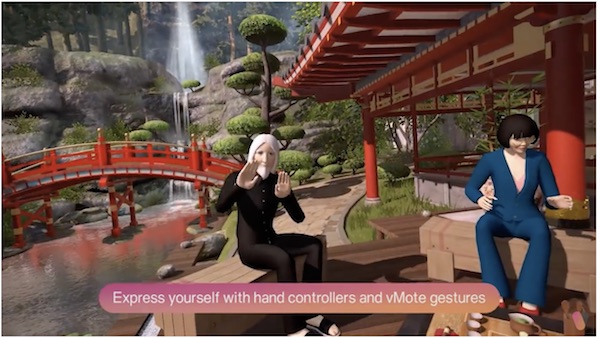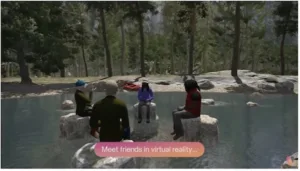Hello Everyone!
Welcome to our DD Lounge, get ready to meet our group today and participate in the meeting about the latest trends in our industry. Can you all hear and see me? – Of course not, maybe in a couple of years this feature will be part of our online presence, for now just go ahead and read to your hearts content.

But really, will it make sense to meet you all in the VR space to present our latest thoughts on the Display Industry? From today’s perspective this seems far fetched, but so was the idea that market research companies might have an online presence at all. Today, who hasn’t?
The first time the terms of VR and Social Networks were mentioned in one sentence was when Facebook acquired Oculus for a sweet $2 billion. Since then many analysts have made the point that this investment has not created any returns and actually never will. Of course this perspective is driven by the analysis of Oculus Hardware and software sales. A view that is mainly driven by MBA thinking of financial institutions and CEOs, but is missing the whole strategic perspective Facebook has developed.
Earlier this year, an email send by Mark Zuckerberg outlines the strategy and goals Facebook has in this space. The email was published by TechCrunch and verified by Road to VR.com, even though Facebook never confirmed or denied the authenticity of the email. However, according to Road to VR.com independent sources have confirmed the email to be coming directly from Zuckerberg. If we take this email seriously, we can get a glimpse at what Zuckerberg and his team have in mind when it comes to VR. This will require not only a major platform but also key apps. This could be meaning that they want to be one of the early providers in the AR/VR field, but it is made clear that it also requires the acceleration of the platform and the mass arrival of VR to maximize the effect for Facebook.
Facebook feels that their road to even larger success is hindered in the mobile space by Apple and Google as they control the infrastructure and software platforms. The goal for VR is to outrun Apple, Google and most likely Microsoft in this space to become the ultimate winner in the VR space. The goal is to have a stronger strategic position in the next wave of computing.
The first step in this direction is Facebook Spaces, but there will be other venues based on VR technology as well. For example, VR and entertainment = Facebook Venues. You get the idea. You could call this strategic thinking or just good marketing, your choice.
Facebook Spaces is not the only VR Social Network, the image below shows what G2.com calls the best VR Social Networks for 2019.
 Leading VR Social Networks according to G2.com
Leading VR Social Networks according to G2.com
They count 13 companies in the VR social network space as market leaders, with Facebook Spaces being just of them. In general these platforms focus either on the social networking aspect or the corporate space. They differ in their approach and what they want to accomplish and what group they want to attract, but they are all built on the same principles:
- Enhance communication between the workforce from anywhere on the planet
- Make collaboration between group members easier
- Provide unlimited space for the group meetings
In addition they all provide similar tools for the users:
Avatar creation as a presentation of oneself is a tricky subject, especially on pure social networks. While in the corporate environment showing up as a gorilla or a unicorn may not be appropriate, such limitations do not exist in the private social networks. To a certain degree one can expect that the avatar used by your meeting partner is either funny or deviates strongly from the real person. It more or less reflects on what the user wants to be rather than what he is. Some apps put more effort into creating lifelike avatars while others are trying to enhance special aspects of an avatar, like hand signs for example.
 VTime XR
VTime XR
Meeting space choice and customization to reflect on the group goals. Again, there is a big difference for the corporate world and the private social network. While corporate meeting spaces may be a reflection of the task at hand, the private spaces are more fun and stimulating. Thinking of Ready Player One, the possible space is limited only by our imagination. I am sure somewhere somebody is already working on computer-generated meeting spaces based on an image or a descriptive language.
 VTime XR hand gestures as a special feature
VTime XR hand gestures as a special feature
Communication choices and full recording capability of the meeting. VR social networks are the next step up from video conferencing. Recording all conversations may be great for corporate applications where record keeping is very important (for example a design meeting for an aircraft), while private spaces may not want that at all. Social networks (the non-VR type) are known for allowing people to hide behind fake personalities and living out fantasies, which they may not want to be recorded – in case they are ever looking for a job that is.
VTime XR = virtual meeting places
As with VR and AR in general, the adoption is driven more by the corporate space, with pure social platforms only being used by enthusiasts if at all. How often have you been invited to meet some in outer space for a chat?
Looking at the current state of VR social networks, it seems unlikely that this thing is taking off within the next few years. However, there is a certain appeal for the corporate platform. With all this international potential as the basis of such social networks, we seem to forget that people in different parts of the world live in different time zones. As we all know, jet lag is a real thing that affects our quality of live and work. If you have a meeting with someone on the other side of the globe, one of you should be sleeping. Welcome to the VR lag! – NH

